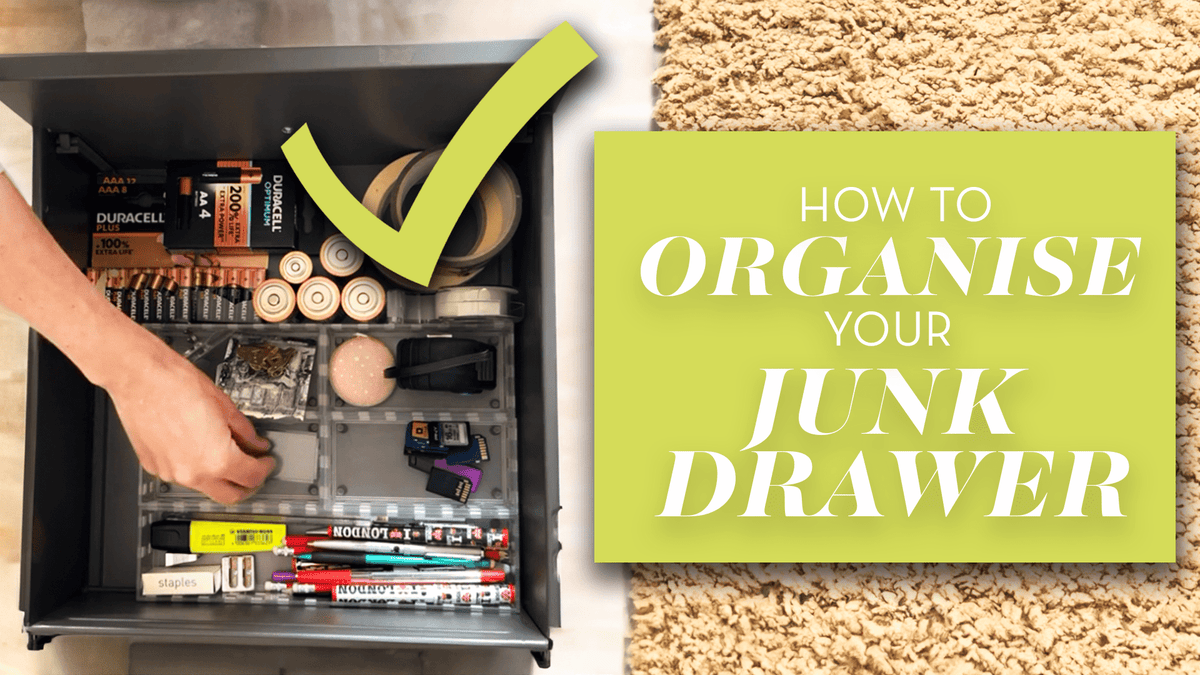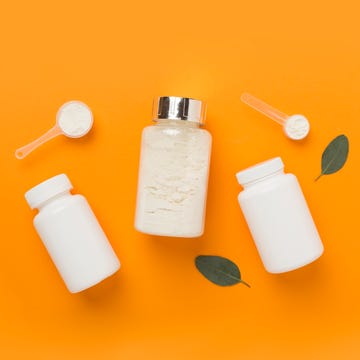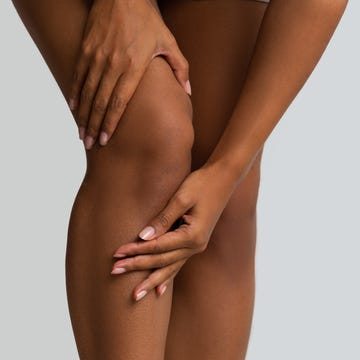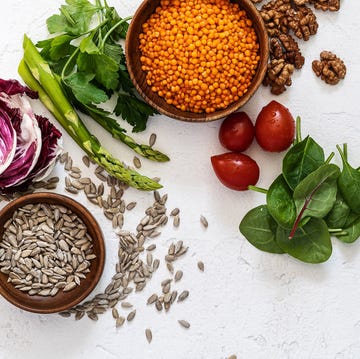Interviewing experts for my book changed me in a lot of ways. One of those ways was my habits. It turns out that, as you accumulate knowledge around how your body functions, you become quite incapable of not doing all the things which help it function better, whether you mean to, or not. Here’s what I learned...
Sleep is everything
The first biggie was sleep. I spoke to more than 20 experts in women’s bodies – and almost all of them mentioned sleep. When I interviewed neuroscientist Dr Sarah McKay, one of the things that came up was that women are twice as likely to develop Alzheimer’s as men. The reasons for this are still being researched, as are the possibilities for protecting our brains against Alzheimer’s, but one of the things that has been definitively proven to be neuroprotective is sleep.
‘It’s the foundation all brain health is built on,’ Dr McKay told me. ‘Sleep is the price we pay for brain plasticity. We go to sleep every night, our brains get kind of… flushed out, cleansed out, when we are asleep. It’s when our memories of the day get wired in. Sleep is my non-negotiable. I also nap.’
What to read next
Having spoken to a whole range of experts, I started changing my habits: easing off the coffee after midday, easing off (massively-sleep disrupting) alcohol consumption in general, having relaxing, nervous system-calming baths in the evening, eating dinner earlier so that my food had more fully digested before I tried to sleep, seeking out more soothing TV shows in the hour before my increasingly established bedtime (9.30 – 10.15), putting my phone down and leaving it to charge overnight outside of the bedroom so that, should I wake up in the early hours, I didn’t have an option on checking it and having my brain kick-started into full consciousness at 3am by an email that could definitely wait til the morning and renouncing lie-ins in favour of a wake-up time as regular as my bedtime (7am-ish). My sleep patterns became more and more regular.
And, what do you know? I started to feel good in ways I’d forgotten I could feel. Charged. Capable. Then I added in afternoon naps as an experiment. I’d always assumed napping would make you feel groggy, muddled and gross, but if Dr McKay said they were good for you, I figured they were worth a go. Plus I’m a freelance writer! What was the freelance lifestyle for, if not incorporating the odd afternoon nap? I calculated that napping between 3 and 3.45pm would be optimal for the rest of my daily schedule, so I laid myself down on my sofa, played a yoga nidra – a meditative body scan – through the living room speakers and, wowzers! I came round from the most blissful zzzzzzs, feeling fresh as a daisy. I wondered if the person who came up with the expression ‘You snooze, you lose’ had ever actually snoozed? Because, my word! There is no losing with snoozing. None at all.
Focus on your pelvic floor
The wondrous gynaecologists – Dr Shazia Malik and Dr Alison Wright shared their knowledge so generously. Dr Wright’s revelation that, in her opinion, pelvic floor exercises should be taught from school age on, struck me hard. Maintaining strength in your pelvic floor – the fruit bowl of muscles that support and contain the internal organs in our pelvis, the bowel, bladder and uterus among them – wasn’t, she explained, just about incontinence (not that incontinence merits a ‘just’ – it’s no piffling matter, it’s about severely limited independence in older women). It was also about helping prevent painful sex, back pain and prolapses (where internal organs can fall down and out of your body, through the vagina). Dr Wright also told me that while pelvic floors can be weakened in women during pregnancy and childbirth, they can also be weakened in perimenopause and menopause. A strong pelvic floor can make orgasms more intense, guys. How do we strengthen them? With exercises! So it was that I started following an Instagram account called @femalephysioco , a good-humoured Australian physio specialising in women’s health, who offers excellent instructions on the proper location of, and activating of, the pelvic floor. She now pops up on my feed once a day, to run me, and her 1.4m other followers, through three-ish minutes of targeted tensing and releasing programmes.
Look after your flora
Dr Malik taught me about the vaginal microbiome (or vaginal flora as it’s also known), the bacteria that colonise the vagina and which need to be well balanced and nourished, to support both the vagina itself - and your overall health. Dr Malik spoke passionately about the absurdity, the outright offence, of products sold to cleanse the inside of your vagina – it’s more than capable of cleansing itself, that’s what its designed to do. These products are at best unnecessary, at worse, disruptive to your microbiome.
Take your pants off
Dr Malik also taught me about the importance of not wearing knickers while you sleep. ‘The opening to your vagina is a few centimetres from your anus,’ she said, ‘and your gut is full of different bacteria to your vagina. So, if you wear panties at night, any of the bacteria around your anus have a warm moist environment to proliferate in, in your panties, then get into your vagina. So don’t give them that, please. Don’t wear panties at night.’ So I stopped doing that. Dr Malik also told me that I should wash my knickers at 60 or 70 degrees, because ‘Thrush is a fungus, it will not die at low temperatures.’
Up your iron
I learned from Professor Hilary Critchley that most women are somewhat iron deficient, that this deficiency accumulates over the course of our reproductive lives, and can carry on through into menopause. What the hell, I thought, and I got my blood tested for vitamin deficiencies. I discovered I was, indeed, low on iron, as well as some others (B12, D3, folate), all of which I started taking religiously. After around three weeks of this, I realised that the occasional bouts of mild but unpleasant positional vertigo – dizziness when I changed the position of my head – from which I’d suffered since my 20s, had… stopped.
A few weeks after that, I had a facial from someone who’d been treating me for years. As Rowen smoothed back my hair into a towelling band to protect it from the applications of oils and creams and so forth, she said: ‘Oh! This feels thick! Have you got extensions in?’ I had not. But I’d spent the previous two months systematically restoring vitamin supplies in which I’d been deficient for decades.
Get strong
Then came the strength training. I’d actually already started getting into it during covid. I’d hurt a disc in my lower back and my rehab programme had incorporated weights and strength training, both of which I’d enjoyed. Research for my book lead to the revelation that women begin to lose muscle mass at 30, that falling oestrogen levels in perimenopause and menopause lead to a weakening of the internal structure of our bones, one which leads to osteoporosis-related fractures in half of women – yup, half – aged over 50… All of which made me double down on strength training – one of the best things you can do to prevent osteoporosis and the best thing you can do to develop and preserve muscle mass. I pulled little weight training sessions off the internet, worked them into my weekly routine, 15 minutes here and there and I also got a 5kg weighted vest for the dog walk. Now I can no longer walk past a kettle bell without picking it up and doing a few goblin squats.
Eat right
As we age, we all need more fibre and more fermented food – did you know women’s gut microbiome gets less diverse with age, which is probably a contributing fact in weight gain in our 40s and 50s? Hence, the kimchi I now add to everything. There’s also the need to encourage much more honest conversation around weight with other women, the issues that come with obesity – and undereating and over-training at the other end of the scale – both of which cause terrible issues.
And honestly? These are only the headlines. There is more. Much more. And it’s all left me feeling both better, and excited and curious about what else I can do to look after this female body of mine.
I’ve realised that it’s quite impossible to know as much as I now do, about my own body, without being subsumed by a new respect for it. An absolute love for it, honestly. It’s so clever.
How The Female Body Works (In All Its Wild And Miraculous Glory) by Polly Vernon is out now













